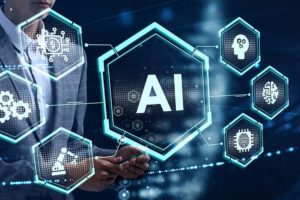I recently did an interview regarding A.I. Check it out! 
Artificial intelligence (AI) is taking over the workplace, and its effects are changing how companies recruit people.
KEY DETAILS
- More companies use AI to help employees get work done efficiently, and human resources (HR) departments are no exception.
- A survey from the Society of Human Resources Management in February 2022 found that 79% of recruiters used AI or some form of automation in their recruitment and hiring practices.
- AI can help HR departments write job postings, prepare interview questions, and create training tools—saving representatives time that can be focused on issues that require more critical thinking.
- While AI can be a powerful tool to guide the recruitment process, HR representatives must monitor the results to screen for any unintended bias or prejudice.
WHY IT’S NEWS
The hiring process can be long and arduous, especially for large companies that may receive hundreds of applications when posting a job. AI tools can help HR representatives filter through potential candidates and move through the interviewing process more quickly.
Human resources consultant Di Ann Sanchez says AI has been a massive timesaver for her and her coworkers. For example, Sanchez has used AI tools like OpenAI’s ChatGPT to write employee handbooks or policies.
“I used to write employee handbooks, and that would take me hours and hours. I can now put in, ‘Give me a safety policy handbook.’ It will come up probably within an hour,” Sanchez tells Leaders Media. Of course, Sanchez still has to edit and double-check the AI’s work, but it still provides the needed material much more quickly than what Sanchez could produce alone.
When hiring new employees, Sanchez says the AI provides valuable help when developing interview questions for prospective hires.
“We’re looking for an accountant,” Sanchez explains. She asks ChatGPT, “‘What are the interview questions to ask for an accountant in such and such industry?’ Let’s just say the airline industry, and it brought back some pretty amazing and insightful questions that I wouldn’t have thought about.”
AI tools also help Sanchez write job descriptions before posting a listing online.
Sanchez has also started to spot more job applicants using AI to write resumes or apply for jobs.
“It’s just the whole language,” Sanchez explains. “You, you can tell by the sophistication of the resume.” Because Sanchez has been working extensively with AI tools, she has picked up on clues that tell her AI most likely wrote a resume.
However, even though she can tell if an applicant used AI to create the resume, this does not affect Sanchez’s view of the applicant.
“I use it for my resume!” she says.
While proponents of AI suggest that AI analysis of applicants can remove employer bias from the equation when hiring, AI tools can sometimes come with their own biases. Sanchez warns that recruiters still need to screen the results AI provides to ensure potential candidates are not being left out.
“Because of our diversity, equity, and inclusion challenges, we’ve got to be very, very careful about ensuring that we’re getting those applicants and they’re not getting screened out. So far, I haven’t found that … I go back and make sure that there’s no adverse impact on all of the protected classes,” Sanchez says.
In 2018, Amazon canceled its AI hiring program after determining that it had furthered bias in recruiting practices. The sample data that the AI was trained on contained more male resumes than females, resulting in the algorithm preferring male employees to female employees.
Still, some researchers have found success when using AI to increase diversity in the workplace, Fortune reports. By making resumes and interviews anonymous or using AI to analyze candidates for specific traits, this technology can help recruiters mitigate unconscious bias from recruiters.
The key to using AI in the workplace well is understanding its limitations and blind spots.
